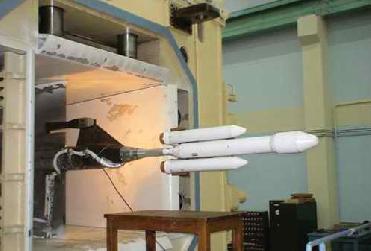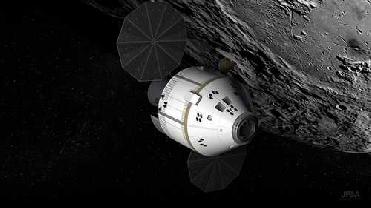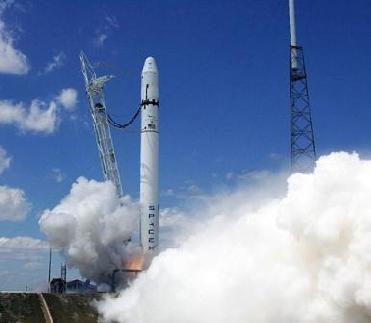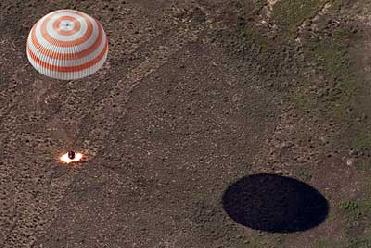
File photo of aero-elastic test of GSLV-Mk III model. ISRO image
NEW DELHI (PTI): As the country readies itself for putting a human on a space flight, scientists are busy developing next generation rockets that can carry more astronauts and put heavier satellites in orbit.
The Geostationary Satellite Launch Vehicle Mark III (GSLV Mk III), expected to be launched in the next three years, will give the country self-sufficiency in launching the entire range of satellites.
"If everything goes through successfully, we can attempt a launch by 2011 beginning," GLSV Mk III Project Director N Narayan Moorthy told PTI here.
Scientists at the Vikram Sarabhai Space Centre (VSSC) in Thiruvananthapuram will carry out testing of all engines this year.
Indian Space Research Organisation (ISRO) scientists also said the GSLV Mk III will enable them to send "heavier and more meaningful" probes to Mars and also help send more astronauts on a single mission.
ISRO is planning to use the current version of the GSLV in the human space flight it plans to undertake in 2015.
"In case we use Mark III, we can send three persons instead of two by the regular GSLV," an ISRO scientist said.
The GSLV is capable of launching 2.5-tonne satellites and ISRO has to depend on the European Space Agency to put in orbit its communications satellites.
The GSLV Mk III will also enable ISRO to pack more transponders on a single flight, thus making it a cost-effective option for satellite launches. The rocket will shape up as a giant vehicle towering over 44 meters, four meters in diameter and carry almost three times more fuel than the current GSLV Mk II.
Moorty said government has sanctioned about Rs 2,500 crore for the programme and infrastructure development for the project.
In the last seven years, ISRO has built new testing and manufacturing facilities at a cost of Rs 1,500 crore.
The new rocket, which can put a four tonne satellite in orbit, will help Antrix Corporation, ISRO's commercial arm, to offer the cheapest space launches in the space market. The regular GSLV can put 2.2 tonne satellites in orbit.
Antrix Corporation made Rs 1,000 crore this year by launching and building satellites for foreign firms and institutions and is expected to grow at the rate of 20 per cent every year.
ISRO crossed key milestones last year with the successful launch of Chandrayaan-I in October and earlier in April when it put into orbit 10 satellites on a single Polar Satellite Launch Vehicle (PSLV), becoming the first country to achieve the feat.
 Previous Article
Previous Article Next Article
Next Article












The Indian Air Force, in its flight trials evaluation report submitted before the Defence Ministry l..
view articleAn insight into the Medium Multi-Role Combat Aircraft competition...
view articleSky enthusiasts can now spot the International Space Station (ISS) commanded by Indian-American astr..
view article